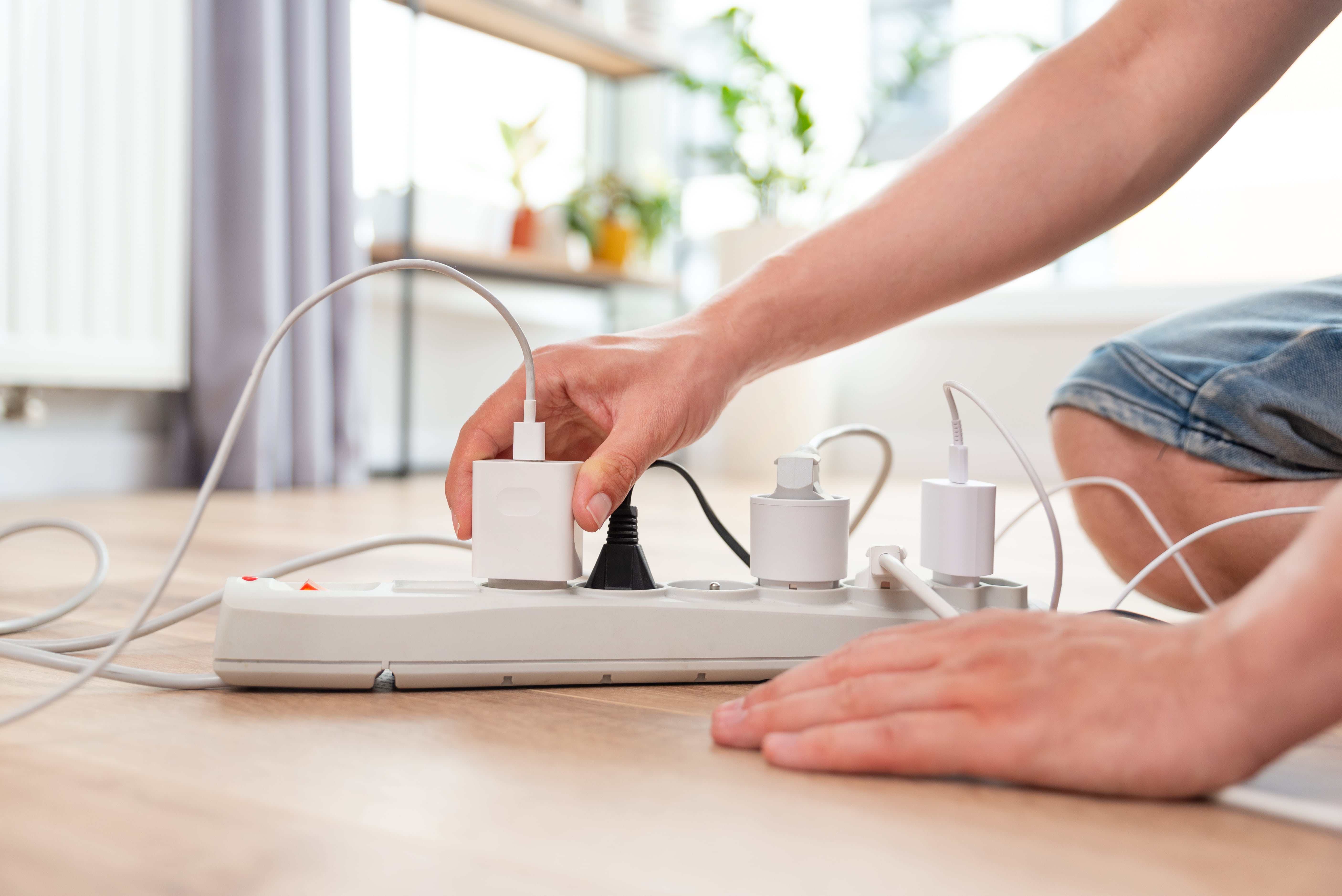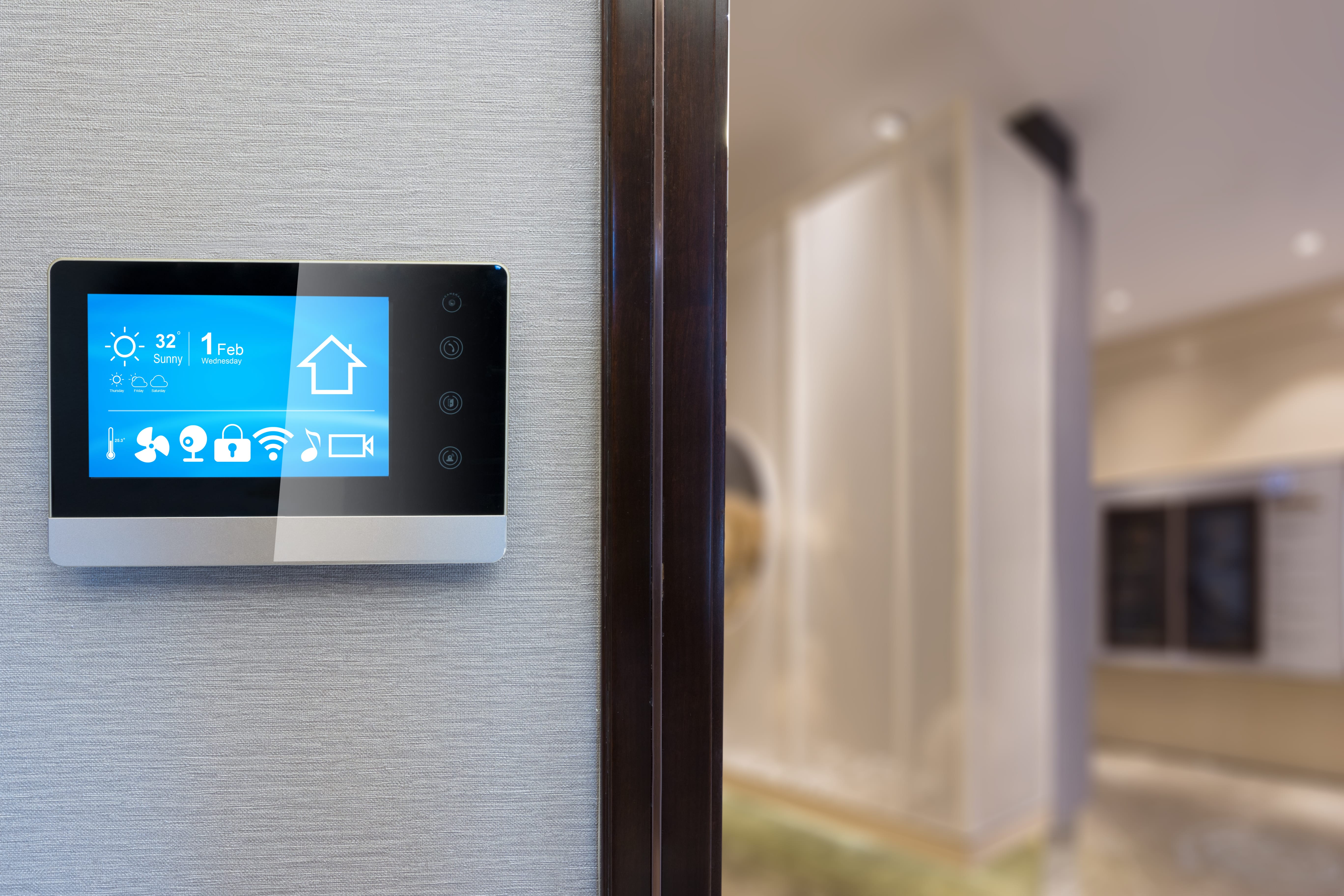Finding ways to save energy at home benefits the environment and can help you save on monthly utility expenses. Small habits like remembering to turn off lights and unplug appliances that aren't in use can greatly impact your environmental footprint. Unfortunately, it can be challenging to remember these simple energy saving-habits during a busy day.
But with home automation, you can come home to a house that is brightly lit and heated or cooled to your liking while still saving energy. Smart home automation products, like thermostats, lighting, and timers, allow you to remotely control your home’s comfort and lighting levels from your phone and even establish schedules for your heating and cooling to prevent energy waste.
Read on to learn how to use home automation and smart home energy management systems to save on your electricity bill.
{{CTA-thermostat-right-plan}}
Heating and Cooling Automation
Heating and cooling are the biggest energy users in the average home, accounting for more than half of total electricity use. While the U.S. Department of Energy (DOE) estimates you can save energy by 1% for every degree you set back your thermostat, this can mean sacrificing comfort.
Instead, try limiting your heating and cooling while you’re away from home or asleep. Turning the thermostat back 7 to 10 degrees Fahrenheit for eight hours a day can reduce your annual energy use by as much as 10%, resulting in smart home energy efficiency.
Timers and Smart Thermostats
You can also use digital timers to create a schedule so that your thermostat is adjusted automatically when you normally leave the house or go to bed. The timer will then return the home to your desired temperature when you typically return or wake up, maintaining your desired comfort level while saving energy.
A smart thermostat can also help you optimize and control your home’s heating and cooling. And there are even options like smart ceiling fans, which only turn on when people are in the room, avoiding wasting energy by cooling an unoccupied area.
Home Energy Challenges
According to the DOE, heating and cooling, water heating, and lighting are the biggest sources of energy consumption in most homes. And a significant portion of that consumption occurs when the house is unoccupied, or its residents are asleep.
Since allowing your heating or cooling system to run throughout the day makes your home more comfortable when you return, it can be tempting to leave it on, even if no one is in the house to enjoy those perfect temperatures.
Eco-Friendly Lighting
Simply switching out traditional incandescent bulbs for LEDs can greatly impact smart home energy savings. LED light bulbs use up to 75% less energy and have a longer life expectancy than their incandescent counterparts.
You can utilize smart lighting with automation, scheduling, and even a remote control. You can set triggers that turn your lights on in reaction to other smart devices, motion sensors, or even your specific location.
The DOE says that controlling your lighting with motion sensors cuts your lighting energy use by 30%. These sensors will automatically turn your lights on or off when you enter or leave a room and can be especially helpful for lighting outdoor areas if you’re coming home at night.
What About Smart Plugs?
Products like smart plugs are also effective components of energy automation systems and help control decorative lighting, which can drain your electricity. These plugs handle the on/off functions and scheduling for lamps, lights, and other small appliances, providing an inexpensive way for homeowners to control their home’s lights and improve home automation energy saving.
Water Conservation
Water heating accounts for as much as 18% of the average home’s energy use. Upgrading to an energy-efficient water heater can save energy, but doing so may not be the most practical solution if your current heater still has several years left in its warranty.
Installing a timer on your water heater can help boost smart home savings in more than one way. The heating element on your heater may warm your water continuously, which means it gets hot faster when needed, but it's also a waste of energy. A programmable timer will keep the heating element from coming on while you’re at work or away on vacation.
Secondly, a timer can be essential to your energy-efficient home automation strategy. You can use a timer to set limits on how long the water heater runs, which can help you take shorter showers, conserving water and energy.
You can also install a smart leak sensor to alert you to leaks in your home, whether under the kitchen and bathroom sinks, behind toilets, or around appliances like washing machines. Detecting leaks before they become major issues can help you avoid wasting water.
Renewable Energy
The next step to taking advantage of smart home energy efficiency is switching to renewable energy to power your household. Power your home with solar energy to significantly decrease your energy costs and contribute to the health of the environment. Learn more about the benefits of renewable energy, including rooftop solar.
Save Energy With a Smart Home
These are just a few ways that smart products and home automation can help you save energy and reduce your Gexa Energy electricity plan expenses. As you can see, there are plenty of opportunities to change your habits and conserve energy with the help of the latest energy management home automation strategies.
You can save with Gexa Energy to help make your home more energy efficient. Learn More about Gexa Energy and their 100% renewable plans from environmentally friendly renewable sources.






































